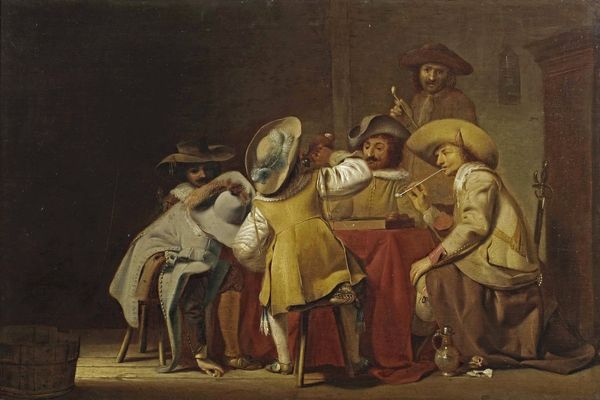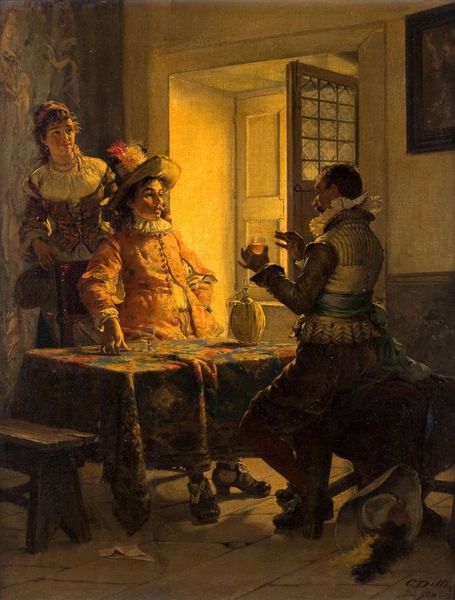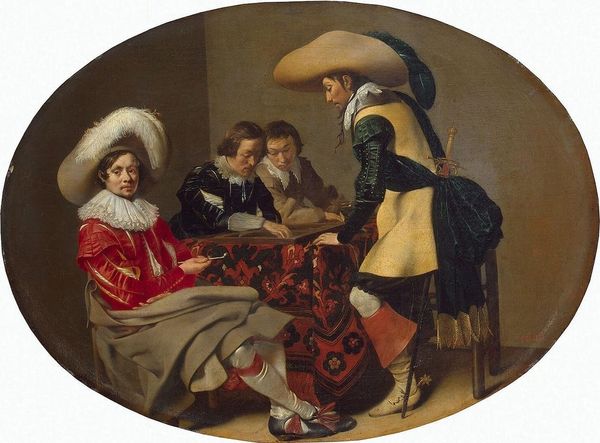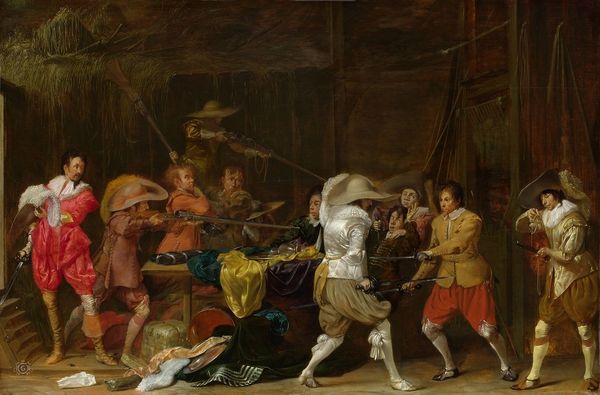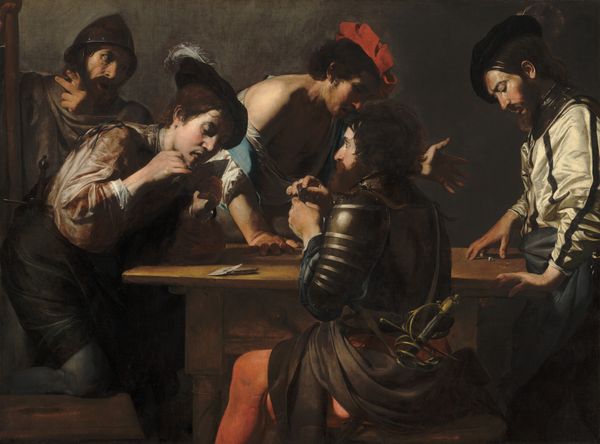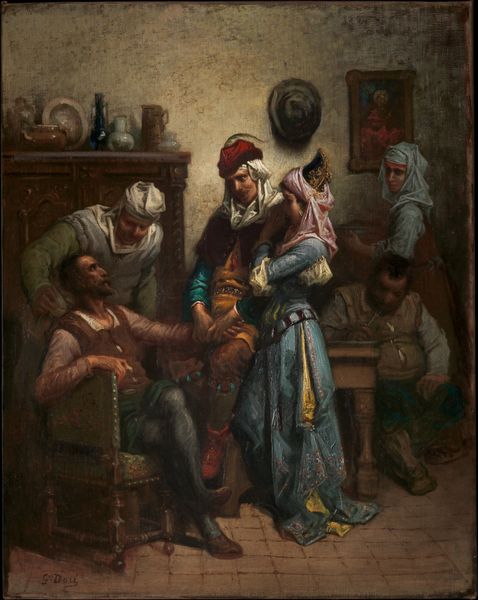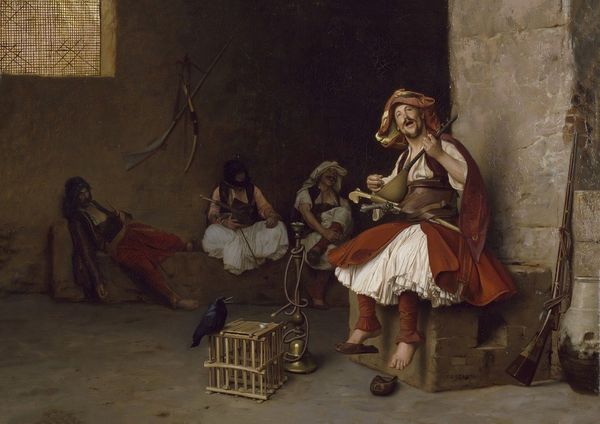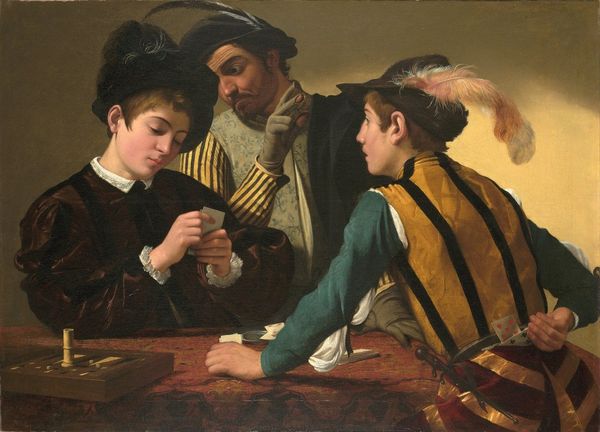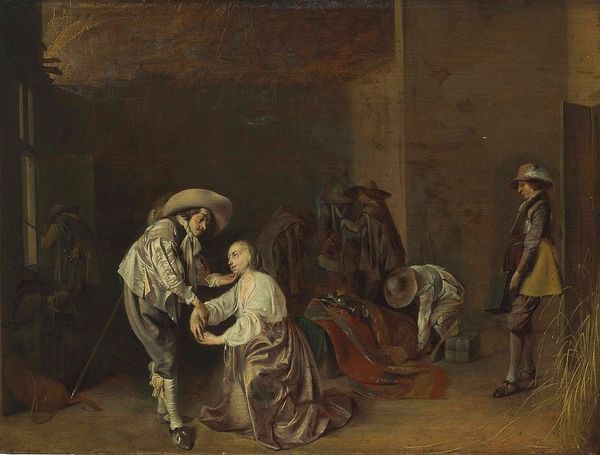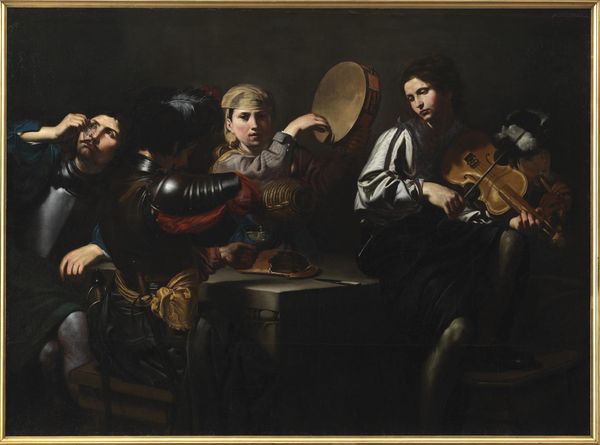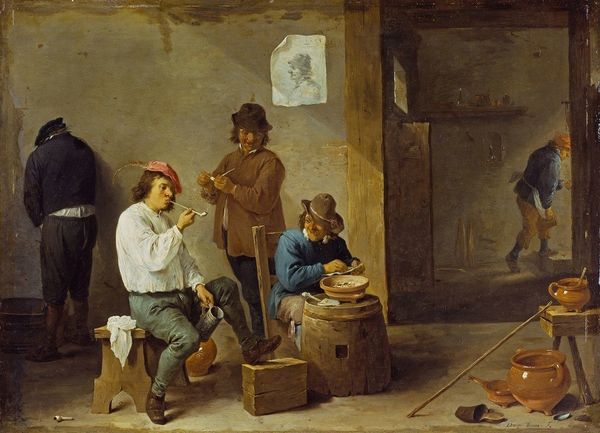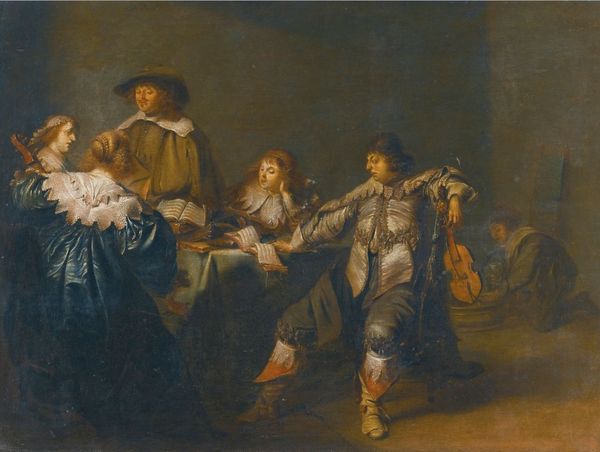
oil-paint
#
baroque
#
oil-paint
#
figuration
#
oil painting
#
genre-painting
Copyright: Public domain
Curator: Here we have Willem Duyster’s “Two Men Playing Tric Trac, with a Woman Scoring,” created around 1630. It's an intimate glimpse into leisure during the Dutch Golden Age. Editor: It has a stillness to it, a contained energy. The composition, the use of light… It draws you into the quiet drama of the game, and the materiality of the scene. Curator: Indeed. Genre paintings like this provide invaluable social documentation. This piece shows us the rising middle class indulging in games of chance, reflecting their growing economic power and social mobility. Tric Trac, a form of backgammon, was quite popular in these circles. Editor: Look closely at that ornate rug draped over the table, though! These items carried serious symbolic weight as they often stood as material demonstrations of wealth that was produced through trading relationships with the East India company. Even their pastime relied on exploited materials and enslaved labor. Curator: Absolutely. The presence of tobacco adds another layer. Not just its status as a valuable import, but its social function in gatherings like these. And consider the clothing, each garment meticulously rendered. Editor: Note also how Duyster applied the oil paint. You can almost feel the different weights and weaves of the various textiles represented—from the roughspun of the background character’s simple smock to the silkier feel of the gambler’s puffed sleeves, each stroke carefully chosen to replicate its associated materiality. Curator: The woman scoring adds another dimension to the narrative. Her focused expression contrasts with the more animated gestures of the players. Is she merely a scorekeeper, or does she have a financial stake in the game? What commentary is the painting itself making regarding societal dynamics, including the status of women within leisure activities? Editor: Right, but how are we engaging with the artifice of wealth on display in terms of labor? As if to obscure where this scene gains its financial power, the players are cast in shadow so that the painting keeps its focus firmly away from exploitative economic structures of the moment, literally out of sight out of mind. Curator: The cool tones create a subdued atmosphere, quite different from the flamboyance often associated with Baroque art. Perhaps reflecting the more restrained tastes of the Dutch Republic. Editor: The quiet tonality only seems to underline the underlying labor issues that aren’t being spoken of by the artist. Still, it really asks viewers to consider where this sense of 'ease' derives from in a socioeconomic system built around exploitation. Curator: A deceptively simple genre painting, but as we have discovered, "Two Men Playing Tric Trac" provides rich insights into the society that produced it. Editor: Indeed, by looking at process and context, we begin to grasp the hidden complexities that structured seemingly simple and pleasant pastimes in Dutch society.
Comments
No comments
Be the first to comment and join the conversation on the ultimate creative platform.
